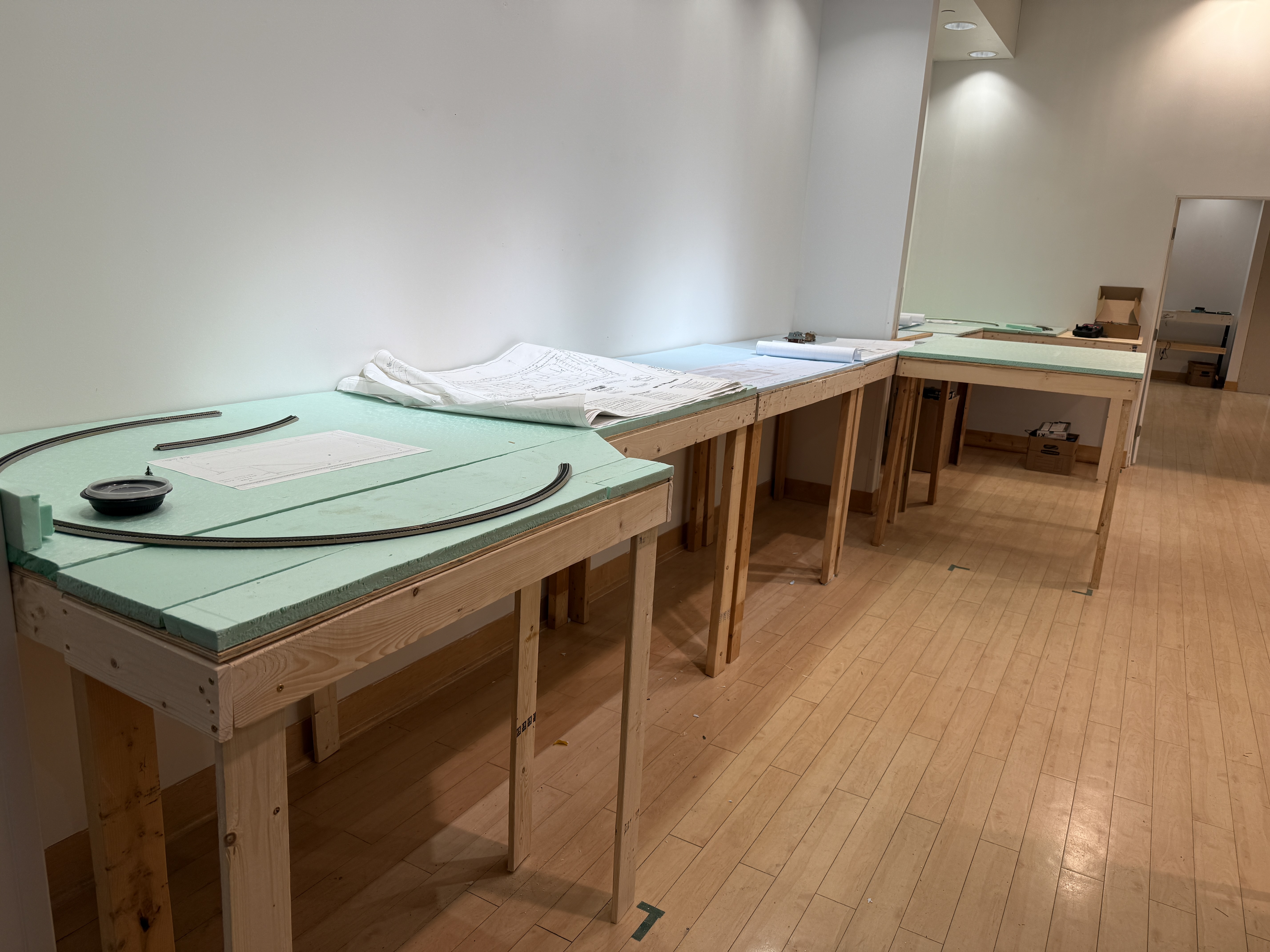Come Together
Get Ready for Family Fun,
Education, and Entertainment!!
| search engine by freefind | advanced | ||
Making Tracks
March 2024
Are you a Model Railroader?
Birth of Virginia Beach
Part 8 in a Series by Warren Leister, Historian
The early days of steam power were not without risk. From the Norfolk Virginian dated May 11, 1872 titled “Terrific Fatal Explosion, Steamer Destroyed, A Frightful Boiler Explosion, Horrible Casualty, Four killed and seriously wounded,” “About 11 o’clock yesterday morning, Marshall Parks, Esq., president of the Albemarle and Chesapeake Canal, received through Mr. D. C. Crowell that the steamer Rotary Capt. W. Y. Johnson, had exploded her boiler at Old’s Point on the Albemarle and Chesapeake Canal, and that four persons were killed, namely, the engineer, his wife, sister and child. It was also requested that he come up immediately and bring up a coroner and surgeon. Mr. Parks immediately put in requisition his tug, the Chowan, and accompanied by Dr. Thos B. Ward, and several gentlemen, including two representatives of the press, started for the scene of the disaster. The Chowan took in tow a large sloop for the purpose of lightening the Rotary, which was reported as sunk across the canal at low water. As it was, the boat bumped perceptibly on Deep Creek and Nicaragua bars, and again on entering the mouth of the canal, but passed on without difficulty, passing at the locks the steamer Louisa, of Baltimore a steam dredge and long raft of logs bound downward. A shortstop and these obstructions were passed, and the little steamer ploughed her way through the sluggish waters of the canal for her destination. Mile after mile was passed, until finally a sail boat full of people was met, who proved to be the passengers of the steamer Cygnet, detained at the wreck.”
“About seventeen miles from Norfolk, pieces of timber, barrels of fish and other articles were seen floating in the canal, and a few hundred yards beyond a large collection of steamers showed the scene of the disaster. Upon reaching it, we found the wreck of the Rotary, a perfect mass of broken timbers and freight sunk in the channels, her bow almost against the eastern bank, while her stern bad swung round so as to effectively impede navigation, except by small crafts. A hasty glance showed that a perfect blockade existed, there being no less than six steamers were the Lynnhaven, the Cygnet, the Olive, the R. T. Waters, the E. Chamberlin and the Lumberman. The latter, the smallest of the number, was drawn through the small opening by the Chowan, which steamer left immediately on her return to being up a vessel to take on the cargo of the Rotary. This gave us time to look about, and on clambering over the ruins we at once came upon the whole scene of horror.”
“The Rotary was a mass of ruins, her deck, fore and aft, torn away, except a space of perhaps twenty feet in the bow, her rent boiler thrown backwards almost in the stern, the engine blown entirely to atoms, the smoke stack lying over the side, while the canal was full of floating debris, consisting of freight, mattresses and pieces of the joiner’s work of the cabin , pilot house freight house and deck {a marine joiner is someone familiar with the installation of the ship interior and woodwork such as joiner bulkhead panels, panel tracks, ceilings, galley equipment, bunks, lockers, tables, and other ship furnishings}. A portion of the freight was blown into the woods on the banks of the canal while the yawl boat which had laid along side of the cabin was found at some distance, a portion of it hanging to the limbs of a tree, some fifty or sixty feet from the ground. But the horrible sight was crowned by the view of four dead bodies lying in the shade of an awning on the canal bank. These, Mr. Wm Walker, the engineer of the boat, formerly of Currituck county, N. C., his wife, Mrs. Elizabeth Walker, and their little girl, about three years old, and Mrs. Elizabeth Crane, sister of the engineer, and wife of Mr. David Crane, engineer of a dredging machine at work in Hyde county. ... The wounded consisted of Capt. Johnston, of Portsmouth, painfully wounded in the leg, and the steward, Wm. Bowser, painfully, but not seriously, wounded in the abdomen. Every one on board was more or less shaken and bruised by the explosion, but singularly enough no one was scalded by the steamer except the steward, who had a slight burn on his left arm.”
“On board the Lynnhaven we found the captain of the Rotary, Mr. Johnson, and from him obtained the following statement: Was sole owner of the boat, which he purchased sometime last fall, and had but recently finished paying for her; was on his way from the Roanoke river to Norfolk, with a heavy cargo of North Carolina cut herrings in barrels, cotton, lumber and other articles; had been aground the day before, but was pulled off by another steamer, at which time it was noticed that the boiler of the Rotary had a crack in it about an inch and a half in length; about 7 o’clock yesterday morning neared Old’s Point, himself and a stoker were at the wheel when the explosion occurred. The first intimation was the lifting of the whole freight house, cabin and pilot house, and the pulling of them into the water over the bow. The wreck on its way came in contact with the mast, by which it was broken into small pieces. He fell into the water amid the broken timbers, from which he disengaged himself, and swam back to the vessel and got on board. Before he had an opportunity of looking about to see the extent of the damage the steward, Bowser, called to him saying ‘My God, Captain, save that lady’ meaning Mrs. Crane, who had just sunk. The Captain looked around, but could not find her, or where she had sunk, and could render no assistance. The steamer, the hull of which was doubtless badly injured, sunk in about twenty-five or thirty minutes, in about eight feet of water and in the position above described. …”
“The steamer Olive, one of those blockaded, transferred her passengers to the Lumberman, and about five o’clock she started down the river on the trip to this city, crowded from stem to stern. On the way down she overtook the boat with the Cygnet’s passengers which she took in town, reaching this city about 8 o’clock p. m. Want of space compels us to curtail our report of this disaster, but we cannot close without returning our thanks to Mr. Parks for many courtesies, or without awarding him due praise for his prompt action attending to the wounded and the dead, and his efforts to remedy so far as he could the damage of the explosion by reopening the obstructions. We expect to see all the detained steamers in port today. From all we could gather on board of the Rotary and elsewhere there was no one to blame for this frightful casualty, or if there was his lips are sealed, and he has paid the penalty of his indiscretion with his life. The firemen stated that so far as they knew nothing was amiss, and we can only record it among the many unaccountable accidents.”
This concludes “Birth of Virginia Beach Part 8” the next installment, Part 9, will be published in April, 2024.
Thank you for reading our newsletter, Making Tracks, and for your interest in the development of the historical Model Railroad Museum to be established here in Hampton Roads in the near future. Please consider a donation or sponsorship of this future attraction to help us acquire a proper location.
Get Updates and Special Offers in
the MRMHR Newsletter:
Making Tracks
Sign Up Here...
The official newsletter for the Model Railroad Museum of Hampton Roads
Share this site on your favorite Social Media page!
Recent Articles
-
Gift Shop
Mar 23, 25 08:19 AM
Want to buy a gift for a special person, We sell model trains and railroad-related gift items. We can order almost anything for you if it's available -
Model Railroad Advertising
Mar 03, 25 09:15 AM
Here is you chance to advertise your business to a selected audience of those who are truly interested in the hobby. -
Making Tracks March 2025
Mar 03, 25 09:08 AM
"Making Tracks" is the official newsletter for the Model Railroad Museum of Hampton Roads containing history, news, videos and updates
The Model Railroad Museum of Hampton Roads will be a fantastic community center based on running, operating and even building your own model railroads! There's something for every age here.
Learn about the real history of this area and how important it was in the building of America. Watch how railroads were built, the people involved, where America's roots were formed.
As they build their own railroads, students will be learning about science, electronics, architecture, technology, engineering, mathematics, and the art of 3 dimensional model landscaping. They can earn rewards for completing projects and winning contests.
Try to solve yardmaster problems on a switching layout like getting the lumber from the forest to the furniture store, by way of the saw mill and the lumber yard.
Run your train around blockades and other trains to get to the station on time without speeding or crashing.
Play railroad monopoly using model railroads. Winner is the one who can collect the most cars into his yard within an hour.
There will be programs for autistic and special needs kids, disabled adults and veterans.
School tours. Holiday Shows. Library and video rooms. Scouts are welcome. Even youngsters will have their own wooden models to enjoy. Classrooms and hands-on clinics for adults. Learn how to get started in the hobby. Or just enjoy the fun.
Everybody loves trains and this will prove it! Just click on the either the blue or the yellow DONATE button below to make it happen...
PayPal Giving Fund:
No Credit Card Fees
OR...
Charitable Donations through PayPal, Credit or Debit cards:
(Opt in or out of paying credit card fees)
Get Updates and Special Offers in
the MRMHR Newsletter:
Making Tracks
Sign Up Here...
The official newsletter for the Model Railroad Museum of Hampton Roads





